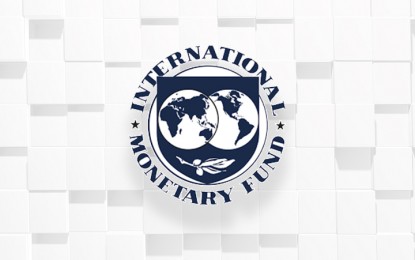
MANILA -- The International Monetary Fund (IMF) has maintained its 2019 growth forecast for the Philippines at 5.7 percent and raised its 2020 projection to 6.3 percent from 6.2 percent previously.
In a briefing Monday, Thomas Helbling, mission chief of the IMF Article IV Consultation to the Philippines from November 5-18, 2019, said they expect domestic growth to post stronger output after a slide in the first half of the year.
He attributed the better outlook to the combination of increased government spending on infrastructure projects, and the total of 75 basis points reduction in the Bangko Sentral ng Pilipinas’ (BSP) key policy rates this year.
“The medium-term economic outlook remains favorable especially if the strong structural reform momentum continues,” he said. “The Philippines remains one of the best-performing economies in the region.”
Helbling cited the “substantial” increase on government’s infrastructure investment from about 3 percent of GDP to about 5 percent in recent years.
“It is (a) welcome (development). I think what the Philippines needs is close the infrastructure gap. And the government probably has plans to further increase infrastructure expenditure,” he said.
Helbling said increasing infrastructure spending vis-à-vis the domestic output is generally a challenge for governments around the globe since they face capacity constraints along the way in terms of project appraisal and implementation.
He thus cited the need “to be pragmatic and (to) use the tools you have…to increase capacity.”
Citing the latest IMF assessment on the country’s public management, Helbling said results of the assessment showed that “the basic framework for the Philippines is good” although there “few areas that could be strengthened, including project appraisal”.
“But in our experience, these are issues all countries face. These are often big projects, multidimensional in terms of challenges ranging from land, technical feasibility, and so on,” he added.
Helbling also underscored the change in the list of infrastructure projects that the government considers as priorities are “in some ways speaks for the strength of the approach because I think projects that may not be feasible for economic and technical reasons have been dropped”.
“We think that that is fundamental strength,” he added.
Helbling said they have included in their full-year growth forecast the assessment for the third quarter, wherein growth recovered and posted an output of 6.2 percent.
The third-quarter figure brought GDP of the last nine months to 5.8 percent, slightly below the government’s full-year target of 6-7 percent.
GDP only expanded by 5.6 percent and 5.5 percent in the first and second quarters this year. Authorities attributed the lower first-quarter growth to the impact of the delay in the approval of this year’s national budget.
IMF Country Representative to the Philippines Yongzheng Yang told journalists Monday they increased the growth projections for next year partly because of the recovery of domestic growth in the third quarter this year.
He said they do not see a repeat of the delay in the approval for next year’s national budget.
“That’s why, we have the increase in growth rate for next year,” he added.
Meanwhile, inflation is seen to end 2019 at 1.6 percent and 3 percent in 2020, which are both within the government’s 2-4 percent target band until 2021.
Rate of price increases has generally decelerated since peaking at 6.7 percent in September and October 2018.
Last October, inflation decelerated further to 0.8 percent from month-ago’s 0.9 percent, bringing the average to date to 2.6 percent.
Helbling attributed the drop in inflation rates to lower oil prices, rice tarrification, and the decisive monetary policy response.
“We see the risks to the outlook as tilted to the downside mostly on account of higher external risks. The near-term rebound in GDP growth could be weaker than expected because of global trade tensions and weaker global economic growth uncertainty especially when it comes to global trade policies, a change in the global financial conditions and natural disasters,” he said.
Upside risks, in turn, include structural reform progress and infrastructure spending is seen as a plus to growth.
Helbling said discussions with Philippine officials focused on how to sustain domestic growth based on the economy’s potential, how to meet inflation target, how to address financial security risks and the structural reforms that will further enhance the expansion of domestic economy and reduce poverty.
He also cited the need for the BSP to be prepared for macroprudential policy responses if renewed high credit growth poses risk to systemic financial stability on account of expected improvement in domestic growth.
He added it is important to fasten the implementation of reforms like the rice tariffication, tax measures, national ID system, ease of doing business, and the BSP Charter amendments. (PNA)
